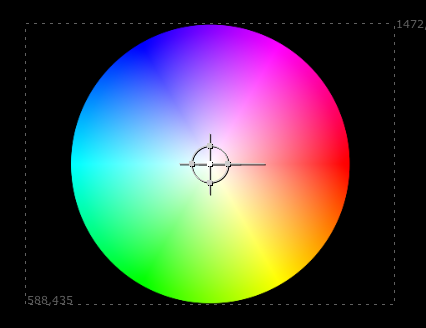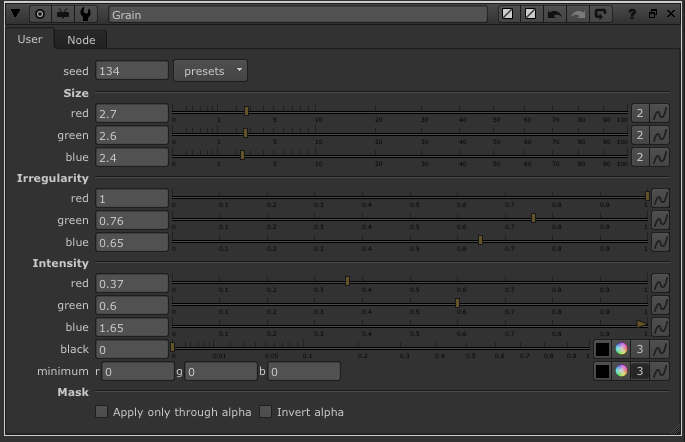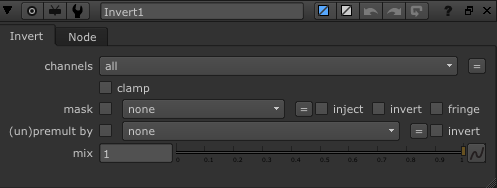In this post I’ve selected some parts on color correction from the Nuke User Guide manual and added some pictures and bolded some parts in order to make it easier to remember how to work with these nodes.
Creating synthetic grain
Dither node
Dither is the crudest—it basically just lets you specify the amount of noise per channel.
Grain
Grain includes presets for matching film stock and a means for controlling the mix between the generated grain and the backplate.
Adjust the Size sliders for the red, green, and blue channels to shrink or enlarge the granules.
Adjust the Irregularity sliders to increase or decrease the random quality of the grain, according to the different channels.
Adjust the Intensity sliders to increase or decrease the contrast of the grain against the original image.
ScannedGrain
ScannedGrain offers film stock presets, plus synthetic grain controls for applying practical grain.
It’s main use is for reading in and applying scanned grain—that is, grain derived from actual film stock. If your facility has such sequences available, you can read them in and apply them using the ScannedGrain node. You can also download grain files from Nuke website for this purpose. (page_78 Nuke UserGuide 6.3v7)
Add, Invert, Multiply
Add node
To offset a channel’s values is to add a fixed value to them, which, in effect lightens the whole channel. You can also add a negative value to a channel, in which case the channel gets darker.
Color> Math> Add
If you are using premultiplied input images, you may want to check (un)premult by and select rgba.alpha from the dropdown menu. This will simulate doing the addition before the premultiplication was done.
Invert node
To invert a channel is to subtract its values from one, which causes its blacks to become white and its whites to become black. In the course of building a script, you’ll have frequent need to invert mattes in particular.
1-0=1
1-1=0
Multiply node
To multiply a channel’s values is to times them by a given factor, which has the effect of lightening the channel while preserving the blackpoint.
1*2=2
0*2=0






